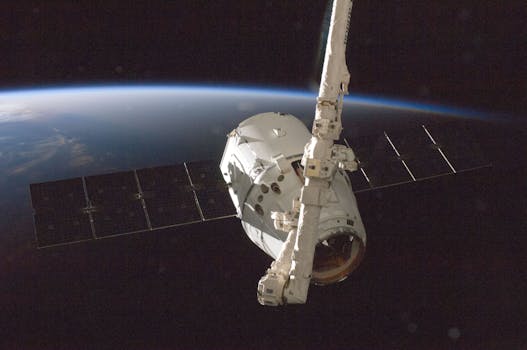From Geostationary to Low Earth Orbit: The Evolution of Satellite Telecommunications in 2023

From Geostationary to Low Earth Orbit: The Evolution of Satellite Telecommunications in 2023
The Focus Keyword ‘Satellite Telecommunications’ has been a vital part of modern communication systems, and its evolution has been remarkable. Satellite telecommunications has revolutionized the way we communicate, with a shift from geostationary to low Earth orbit. This article explores the current state of satellite telecommunications, its applications, and future prospects.
Introduction to Satellite Telecommunications
Satellite telecommunications refers to the use of satellites to transmit and receive signals, enabling communication between different locations on Earth. The first commercial satellite, Intelsat 1, was launched in 1965, and since then, the technology has advanced significantly. Geostationary satellites, which orbit the Earth at an altitude of approximately 36,000 kilometers, have been the primary means of satellite telecommunications for decades.
Geostationary vs. Low Earth Orbit Satellites
Geostationary satellites have several advantages, including a wide coverage area and high-altitude stability. However, they also have some limitations, such as high latency and limited bandwidth. Low Earth orbit (LEO) satellites, on the other hand, operate at an altitude of around 160 to 2,000 kilometers, offering lower latency and higher bandwidth. LEO satellites are ideal for applications that require real-time communication, such as video conferencing and online gaming.
Applications of Satellite Telecommunications
Satellite telecommunications has a wide range of applications, including broadband internet, mobile networks, and television broadcasting. It also plays a critical role in emergency response and disaster recovery, providing communication services in areas where traditional infrastructure is destroyed or damaged. Furthermore, satellite telecommunications is used in the military, aviation, and maritime industries for navigation, communication, and surveillance.
Future Prospects of Satellite Telecommunications
The future of satellite telecommunications looks promising, with several new technologies and innovations on the horizon. The development of constellations, such as SpaceX’s Starlink and Amazon’s Kuiper Systems, is expected to provide global coverage and high-speed internet connectivity. Additionally, the use of advanced materials and propulsion systems is expected to reduce the cost and increase the efficiency of satellite launches.






